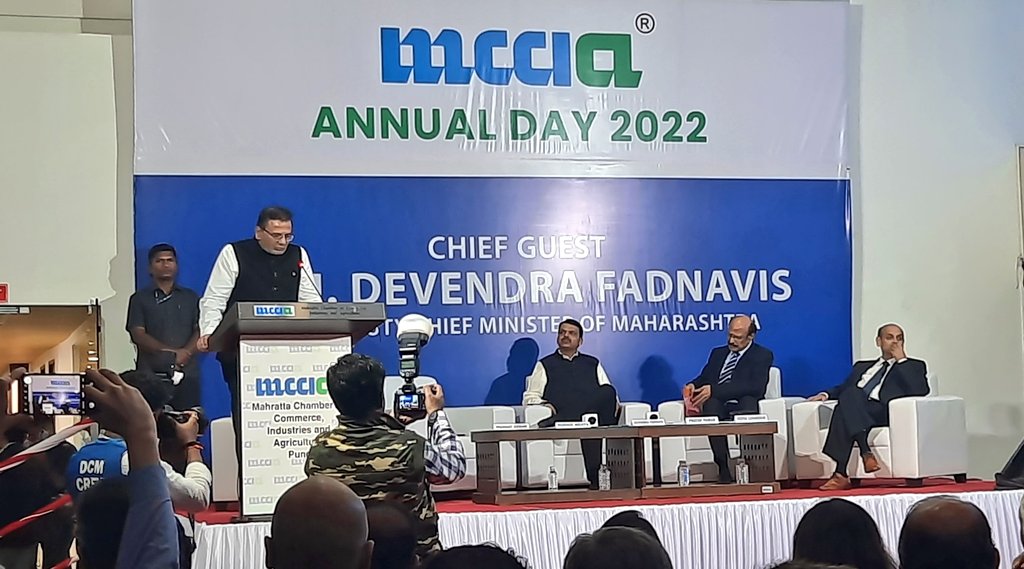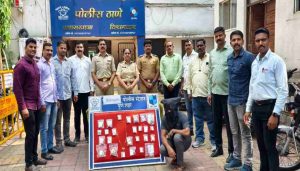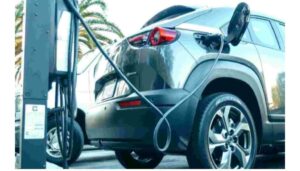Pune Region Can Become Fastest Growing Urban Region In India: MCCIA President Sudhir Mehta

Pune, 25th September 2022: A total of 20 percent of all industries in Maharashtra are in the Pune district. One cluster of Hinjewadi, with 147 companies, provides 350,000 jobs and over Rs 80,000 crores in exports, proving that creating economic clusters as centres of economic activities works. If we follow the same model, Pune can achieve the distinction of becoming the fastest-growing urban conglomeration in the country, said Sudhir Mehta, president of Maratha Chamber of Commerce And Industries (MCCIA).
He was speaking at the annual day of MCCIA today. Maharashtra Deputy Chief Minister Devendra Fadnavis was the Chief Guest on the occasion.
“Devendraji, I can assure you that the Pune region can be the Sachin Tendulkar and Virat Kohli opening pair, which achieves 20-25% of your one trillion targets for the state economy. All of us in the room are committed to supporting your mission and vision. We have proved that together we could defeat the pandemic, and we can use that same sense of public, private, NGO and government partnership to achieve the same,” Mehta added.
He identified the following eight focus areas to make Pune the fastest-growing urban region in India:
Become the cleanest city in the country: Indore has been the cleanest city for the fifth consecutive year while Pune occupies fifth place. Cleaning and waste management initiatives, improving public transport infrastructure, river cleaning, and riverfront development are some of the key areas that can have a massive impact on the city’s future growth, development, and economy. A strong joint initiative to make Pune city the cleanest in the country in the next three years should be taken.
Education Hub: Pune has the potential to become a global educational hub and a ‘knowledge-driven economy’ that generates higher per capita income. Attempt to attract 100,000 global students annually. For this, all actions are to be taken to make it a leading educational hub for the country and the world in the next 10 years.
EV, Engineering and R&D Hub: Electric and Hydrogen vehicles are going to be the largest contributor to the manufacturing industry of the country over the next 10 years. This can also be the largest source of employment in the country, which can generate employment for millions. If Pune becomes an EV hub, ultimately it will help the whole ecosystem of Western Maharashtra. Given the robust R&D infrastructure here, increasing numbers of innovation centres, 50+ research labs, and institutes, Pune can become the National Center for R&D of EVs, which require equal proficiency and innovation in software and hardware. Pune city is uniquely positioned. There are hardware and software-related companies, and with the content of software increasing, this is something that can be achieved.
Global Medical Hub: Pune’s reputation as a centre for good healthcare is evident in the way it tackled the pandemic. Pune has seen a lot of health-tech start-ups rising in the past few years and has the potential to become an ideal destination for quality and affordable medical aid and the production of medical equipment.
“Healthcare is one of the biggest expenditures of GDP, and if we can attract those who want to get their basic healthcare done here and elective surgeries, it will add substantially to the city’s medical tourism and economy. However, to achieve this, we need to create a cluster of several multi-speciality hospitals, and healthcare centres, all housed in a similar location. Eventually, we should aim to become one of the global medical hubs of the world.”
Pune airport: Current airport expansion is the most important area which we have been pursuing. The Mumbai airport with a single runway has more than 1,000 flight movements in a day. So, there is no reason why we can’t increase the number of take-offs and landings at the current Pune airport, with the Air Force’s participation and without any infrastructure change. Moreover, an extension of the current runway is the other pressing issue that needs swift addressing. “We remain the largest urban conglomeration anywhere in the world without a fully functional airport, and this will hopefully change soon.”
Improved rail connectivity: With the advent of the Vande Bharat trains, hourly train service between Mumbai and Pune, and also between the new airport in Panvel to Pune, is requested. This can be a game changer for economic growth.
Improved civic infrastructure: With a GDP of $69 Bn, Pune is ranked No. 7 in India. As Mumbai leads with $310 Bn, Pune is preceded by Hyderabad at No.6 with $75 Bn and Chennai at No.5 with $79 Bn. Pune is one of the top five FDI destinations, the top five manufacturing exporters, and the largest engineering goods manufacturer in India. “Without a doubt, a dedicated international airport and improved civic infrastructure can take us above Hyderabad and Chennai.”
Ease of doing business: Globally, besides China, India is emerging as a new destination for doing business. “We need to support the creation of an entrepreneurial ecosystem in Pune by removing key bottlenecks, including policy and procedural improvements and removal of Mathadi illegal activities. Pune’s development in science and technology, innovation, and specialization in services with a skilled workforce gives us an advantage that we must act upon. We will be happy to work closely with the state government in this area, and this can set an example for the rest of Maharashtra.”
Mehta also spoke about the work done by MCCIA during the COVID pandemic. “Immediate Past president Pradeep Bhargava, Prashant and I (then Vice-President) realized that the city of Pune required a platform to enable collaborative action in responding to the catastrophic challenge of fighting the virus. And we did so with proactive support from MCCIA, industry members, hospitals, social organizations, and the Government. Through coordinated action, the multi-stakeholder group, aptly named Pune Platform for COVID-19 Response (PPCR), exemplified civic partnership abilities to cope with the crisis,” Mehta recalled.
Some key statistics of impact through PPCR:
– 250+ Hospitals, 250+ Corporates, 1,000+ Donors, 10+ Government offices, and 100+ Private & non-profit sector members
– Equipment worth 200 crores deployed to date
– Increased Pune’s COVID Bed capacity by 735% & ventilator capacity by 452%
– Supported increase in Pune’s daily vaccination capacity by 70%
– Provided 130 HFNOs, 875 Ventilators
– Set up 12 oxygen generator plants – six of those worth 12 crores, were ordered in less than 24 hours as part of a unique govt private partnership
– Assisted in setting up a 600-bed Covid Care Facility and 350-bed COVID Care Centre in participation with the Jan Kalyan Samiti.
– Mission Vayu: 100 crores worth of medical equipment was sourced and distributed across the country within a week
– Sourced 1,000 BiPAP Ventilators, 8,000 oxygen concentrators, and 50,000 oximeters from Singapore. One of the largest civic-led initiatives to support the healthcare infrastructure and tackle the pertaining oxygen shortages across India
– Supplies were distributed to 30 districts in Maharashtra and across various other states in India
– Mission Vayu impacted at least 40-50 thousand patients every week
“The pandemic had significant ramifications for the economy, livelihoods, and businesses. As a chamber, we extended our knowledge, experience, and initiatives to assist the industry to overcome the challenges endured. I would like to thank the 500+ organizations and individuals who opened their hearts and supported our initiative. Special thanks to the 250+ hospitals in Pune which created the largest Covid bed capacity in the country through voluntary efforts,” Mehta said.







